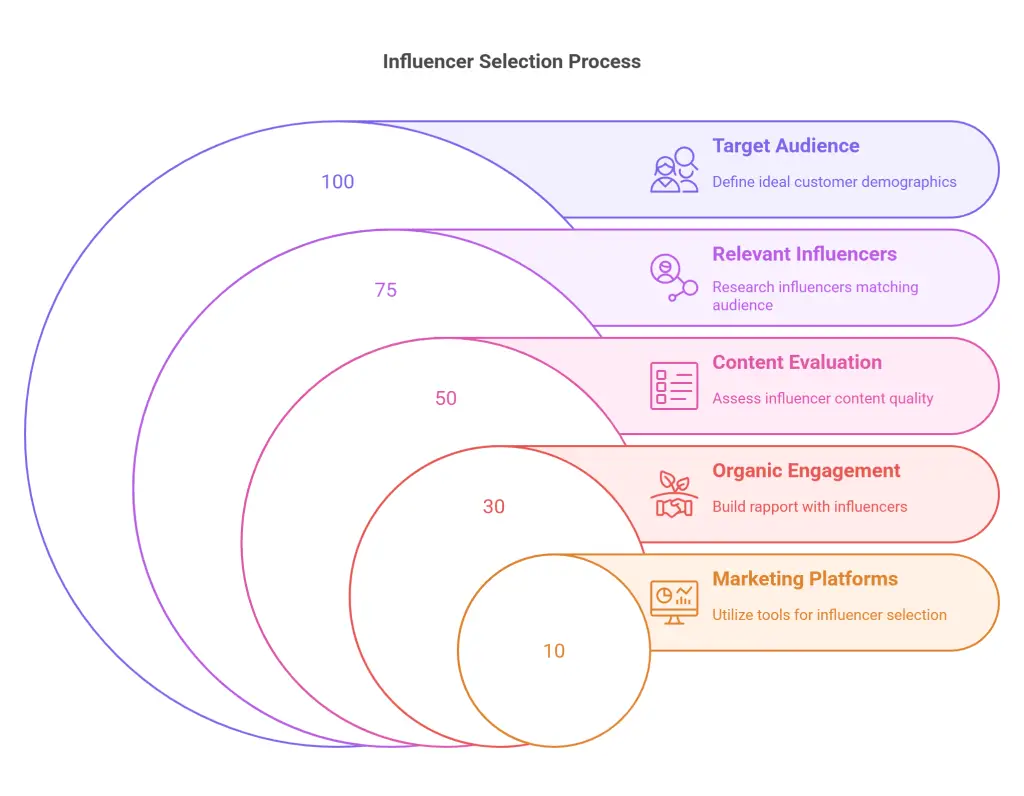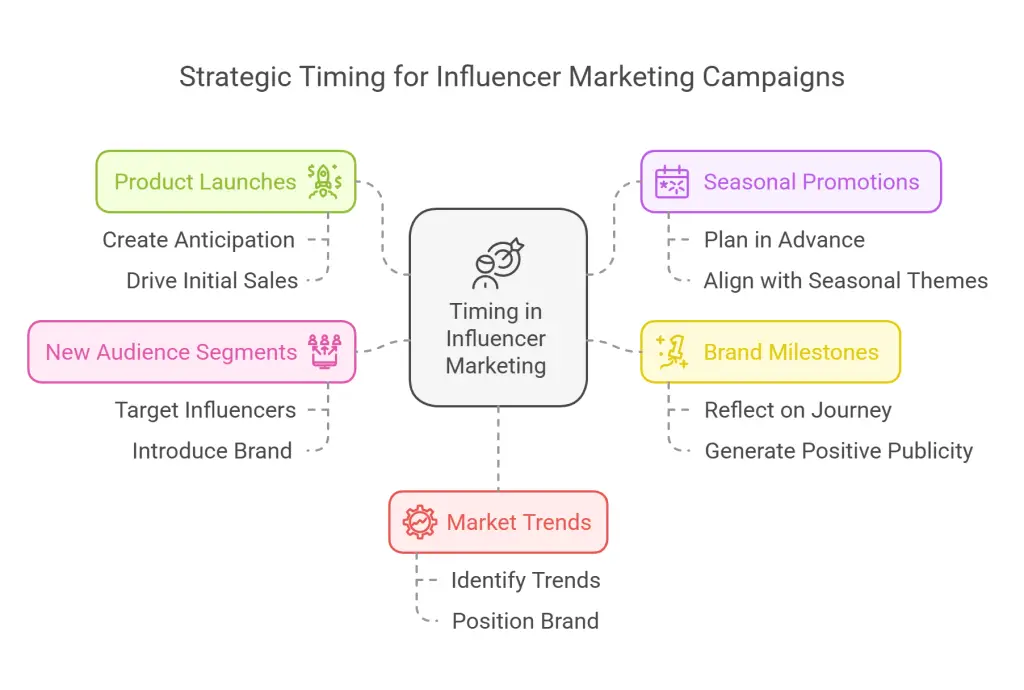Influencer marketing has quickly become a powerful tool for businesses of all sizes, especially for small businesses looking to expand their reach without breaking the bank. The ability to leverage the credibility and audience of individuals who have built trust and authority in specific niches can be a game-changer for small businesses aiming to grow their brand presence, engage with new customers, and ultimately drive sales.
What is Influencer Marketing?
Influencer marketing involves collaborating with individuals who have a dedicated following on social media or other online platforms to promote your products or services. These influencers, who can range from celebrities to niche content creators, have the power to influence the purchasing decisions of their audience through their content, opinions, and recommendations.
Unlike traditional advertising, influencer marketing is more organic and personal. It builds on the trust and rapport that influencers have established with their followers, making it a more authentic and relatable way for brands to connect with potential customers. By aligning with influencers whose audience matches your target market, you can extend your brand’s reach to a wider, yet still highly relevant, audience.

Why Should Small Businesses Consider Influencer Marketing?
For small businesses, influencer marketing offers several key benefits that can significantly impact growth and success.
1. Increased Trust and Credibility
One of the most significant advantages of influencer marketing is the inherent trust that influencers have built with their followers. When an influencer recommends a product or service, their audience is more likely to trust that recommendation because they perceive the influencer as a knowledgeable and authentic source. This can be especially beneficial for small businesses that may not yet have widespread brand recognition or a large marketing budget. Partnering with a trusted influencer can lend your brand credibility, helping to establish trust with potential customers more quickly.
2. Enhanced Brand Exposure
Collaborating with influencers can dramatically increase your brand’s visibility. Influencers have established, engaged audiences who are already interested in the type of content they produce. By working with influencers who align with your brand values and target market, you can introduce your products or services to a larger audience that you might not be able to reach through traditional marketing channels alone. This expanded exposure can lead to increased brand awareness, more website traffic, and ultimately, higher sales.
3. Cost-Effective Marketing
Influencer marketing can be more cost-effective than many traditional forms of advertising, particularly for small businesses with limited budgets. Micro-influencers—those with smaller but highly engaged followings—often charge less for collaborations than larger influencers or celebrity endorsements, yet they can deliver highly effective results due to their close connection with their audience. This makes influencer marketing an accessible option for small businesses looking to maximize their marketing budget.
4. Targeted Marketing
One of the most powerful aspects of influencer marketing is its ability to target specific demographics. By selecting influencers whose audience matches your ideal customer profile, you can ensure that your marketing efforts are reaching the right people. This targeted approach can lead to higher conversion rates, as you are directly engaging with individuals who are already interested in your industry, niche, or product type.

Where to Find the Right Influencers for Your Brand?
Finding the right influencers to partner with is crucial to the success of your influencer marketing campaign. The right influencer can elevate your brand and bring you closer to your business goals, while the wrong one may not deliver the desired results.
1. Identify Your Target Audience
Before you start searching for influencers, it’s essential to have a clear understanding of your target audience. Who are your ideal customers? What are their interests, demographics, and online behaviors? By defining your target audience, you can narrow down the pool of potential influencers to those who have a following that aligns with your customer base.
2. Research Relevant Influencers
Once you have a clear picture of your target audience, begin researching influencers who cater to that demographic. Start by looking at social media platforms where your audience is most active. Instagram, TikTok, YouTube, and Twitter are popular platforms for influencer marketing. You can use tools like BuzzSumo, Traackr, or Upfluence to discover influencers based on keywords, audience size, engagement rates, and other metrics.
Look for influencers who consistently produce content that resonates with your brand’s values and message. Pay attention to their engagement rate—how actively their followers like, comment, and share their posts. An influencer with a smaller but highly engaged audience can often be more effective than one with a large but less active following.
3. Evaluate Influencers’ Content and Audience
As you identify potential influencers, take the time to thoroughly review their content and audience. Look at the quality of their posts, the tone they use, and how they interact with their followers. Ensure that their style and values align with your brand’s identity.
Also, consider the demographics of their audience. If an influencer’s followers do not match your target market, they may not be the right fit, even if their content is aligned with your brand.
4. Engage with Influencers Organically
Before reaching out with a formal collaboration proposal, engage with potential influencers organically. Follow them on social media, like and comment on their posts, and share their content if it’s relevant to your audience. This not only puts your brand on their radar but also helps you build a rapport before discussing a potential partnership.
5. Use Influencer Marketing Platforms
Influencer marketing platforms can be a valuable resource for small businesses. These platforms, such as AspireIQ, Tribe, and HypeAuditor, allow you to search for influencers based on specific criteria, manage campaigns, and even track performance metrics. These tools can save you time and help ensure that you’re choosing influencers who are a good fit for your brand.

When to Engage with Influencers for Campaigns?
Timing is a crucial factor in the success of your influencer marketing campaigns. Knowing when to engage with influencers and launch campaigns can make a significant difference in the impact of your efforts.
1. Product Launches
One of the most effective times to collaborate with influencers is during a product launch. Influencers can generate buzz and excitement around your new product, helping to drive initial sales and awareness. By involving influencers in your product launch, you can create a sense of anticipation and exclusivity that encourages their followers to check out your product.
2. Seasonal Promotions
Seasonal promotions and holidays present another excellent opportunity to work with influencers. Whether it’s a Black Friday sale, a back-to-school promotion, or a holiday gift guide, influencers can help amplify your seasonal marketing efforts. Plan your campaigns in advance to ensure that influencers have enough time to create and share content that aligns with the seasonal theme.
3. Brand Milestones
Celebrating brand milestones, such as anniversaries, reaching a certain number of followers, or achieving significant business goals, can also be a great time to engage with influencers. These milestones offer a chance to reflect on your brand’s journey, share your achievements with your audience, and generate positive publicity with the help of influencers.
4. When Introducing a New Audience Segment
If you’re looking to expand your reach to a new audience segment, influencers can be instrumental in making that transition. By partnering with influencers who have a strong following within the new demographic you want to target, you can introduce your brand to potential customers who may not have been aware of you previously.
5. During Market Trends
Keeping an eye on market trends and industry developments can also help you determine the best timing for influencer collaborations. If a particular trend is gaining momentum within your industry, collaborating with influencers to create content around that trend can position your brand as relevant and forward-thinking.

Steps to Implement a Successful Influencer Marketing Strategy
Implementing a successful influencer marketing strategy involves careful planning, execution, and measurement. Here’s a step-by-step guide to help you get started.
1. Set Clear Goals and Objectives
Before reaching out to influencers, define what you want to achieve with your campaign. Are you looking to increase brand awareness, drive website traffic, boost sales, or grow your social media following? Setting clear goals will help you determine the right influencers to work with, the type of content you want them to create, and how you’ll measure success.
2. Create a Campaign Brief
Once your goals are set, create a detailed campaign brief that outlines your expectations for the collaboration. The brief should include the campaign objectives, key messages, target audience, deliverables (such as the number of posts, type of content, and platform), and any specific guidelines or brand standards. A well-crafted brief ensures that both you and the influencer are on the same page and helps to avoid misunderstandings.
3. Choose the Right Influencers
Based on your goals and target audience, select influencers who align with your brand values and can help you reach your objectives. As mentioned earlier, take into account their content quality, engagement rates, and audience demographics. Reach out to influencers with a personalized pitch, explaining why you think they’re a great fit for your campaign and what you hope to achieve together.
4. Develop a Content Strategy
Work with your chosen influencers to develop a content strategy that resonates with both their audience and your brand. Give influencers creative freedom to produce content that feels authentic to their style, as this will resonate more with their followers. However, ensure that the content aligns with your brand’s message and goals.
Consider the types of content that work best on the chosen platform. For example, Instagram Stories may be ideal for behind-the-scenes looks or product demonstrations, while a YouTube video might be better suited for a detailed review or tutorial.
5. Establish a Timeline
Set a clear timeline for the campaign, including deadlines for content creation, posting, and any associated activities like giveaways or events. Make sure the timeline aligns with your overall marketing calendar and allows for any necessary adjustments or approvals.
6. Monitor and Engage
As the campaign rolls out, monitor its progress closely. Engage with the content that influencers are posting by liking, commenting, and sharing it on your own channels. This not only increases the visibility of the content but also shows that you’re actively involved in the campaign. Use social media listening tools to track how your campaign is performing and how your audience is responding.
7. Measure Success and ROI
After the campaign concludes, evaluate its success by measuring the key performance indicators (KPIs) you defined at the outset. Common metrics include engagement rates, follower growth, website traffic, sales, and brand mentions. Use these insights to calculate the return on investment (ROI) of the campaign.
Analyze what worked well and what could be improved for future campaigns. Gathering feedback from the influencers themselves can also provide valuable insights into how the collaboration could be more effective.
8. Foster Long-Term Relationships
Building long-term relationships with influencers can be more beneficial than one-off campaigns. Consistent partnerships allow influencers to become more familiar with your brand, leading to more authentic and impactful content over time. Consider offering incentives for long-term collaborations, such as exclusive access to new products or special promotions.

Conclusion
Influencer marketing offers small businesses a powerful way to enhance brand visibility, build credibility, and connect with new audiences. By carefully selecting the right influencers, strategically planning your campaigns, and continuously measuring and refining your approach, you can leverage influencer marketing to achieve your business goals and drive growth.
Remember, the key to successful influencer marketing lies in authenticity and alignment. By partnering with influencers who genuinely resonate with your brand and target audience, you can create meaningful connections that lead to lasting results.
Further reading
Sprout Social. “Influencer Marketing: A Guide to the Basics.” Last accessed February 4, 2025. https://sproutsocial.com/insights/influencer-marketing/.
Mailchimp. “What Is Influencer Marketing?” Last accessed February 4, 2025. https://mailchimp.com/resources/what-is-influencer-marketing/.
McKinsey & Company. “What Is Influencer Marketing?” Last accessed February 4, 2025. https://www.mckinsey.com/featured-insights/mckinsey-explainers/what-is-influencer-marketing.
Wikipedia. “Influencer Marketing.” Last accessed February 4, 2025. https://en.wikipedia.org/wiki/Influencer_marketing.
Forbes. “Understanding Influencer Marketing and Why It Is So Effective.” Last accessed February 4, 2025. https://www.forbes.com/sites/theyec/2018/07/30/understanding-influencer-marketing-and-why-it-is-so-effective/.
Neuralle. “Influencer Marketing in Australia: Trends and Insights for 2024.” Last accessed February 4, 2025. https://neuralle.com/blog/influencer-marketing-australia-2024.
The Social Shepherd. “Influencer Marketing Statistics You Need to Know.” Last accessed February 4, 2025. https://thesocialshepherd.com/blog/influencer-marketing-statistics.
Tribe Group. “Tribe: Influencer Marketing Platform.” Last accessed February 4, 2025. https://www.tribegroup.co/.
Salesforce. “Influencer Marketing.” Last accessed February 4, 2025. https://www.salesforce.com/au/marketing/influencer-marketing/.







